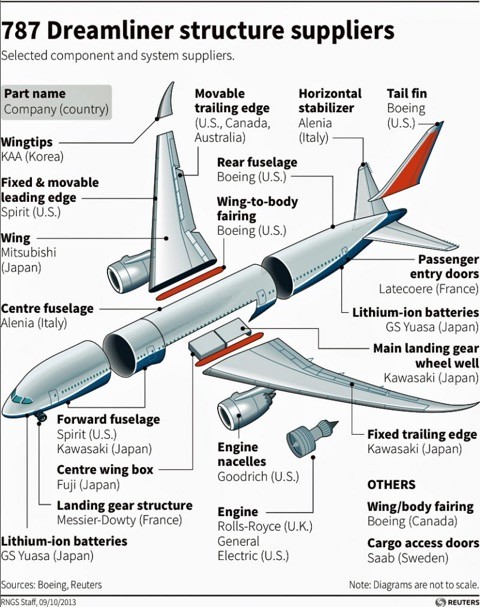The short answer is “No.” But here is why I put the question in that form.
Two days ago I showed a simple supply-chain chart for the new Chinese airliner, the C919, that highlighted the extent to which its crucial highest-value, highest-tech components were all from North America or Europe or Japan, finally assembled in China. That’s a little thumbnail of the chart below.

The chart was a shorthand for the theme I had developed in China Airborne: that the next decade or two of industrial development were likely to be a lot more challenging for China than the previous few (near miraculous) decades had been.
This past generation was when China brought hundreds of millions of people from rural poverty to inclusion in the global manufacturing-and-trading system, mainly at lower-wage, lower-tech assemblers for the world. A generation from now, is China likely to just be a bigger version of today’s supplier-to-the-world economic model? Or will it have moved into the high-value “rich country” industries that would give it its own GE, its own Apple, its own Siemens, its own Toyota? That is one of many dramas now underway in China’s evolution. And the question also includes whether it will have its own Boeing or Airbus. The C919 is a step in that direction, but this first step is mainly iPhone like, in assembling others’ components.
***
That’s the background for another chart, sent by a reader in Seattle, plus comments and context after the jump. Here’s the chart:

While obviously a lot more of the value added in the 787 comes from Boeing relative to what COMAC contributes to the C919, I could not resist sending you this image.
I do entirely agree with your post, though.
Points of context:
- The aerospace industry, like most other advanced manufacturing systems, is globally integrated and dispersed. This is for both business and political reasons. The business factor is specialization in certain systems. (For instance, the three companies that dominate the jet-engine business are Rolls Royce, of the UK; Pratt & Whitney, of the U.S. firm UTC; and the U.S. firm GE, on its own and in partnership with the French Snecma group.) The political factor is a heavy governmental role in the airplane business: Chinese airlines, for instance, balance their purchases from Boeing and Airbus on diplomatic as well as strictly business groups. So any airplane will have some kind of components-from-elsewhere supply chart.
- The Dreamliner chart depicts structural elements of the airplane and leaves out many of its highest-value components. As the reader says, Boeing creates, supplies, and controls much more of the final value of its products than China’s COMAC yet does.
- One lesson for Boeing from the Dreamliner’s prolonged and highly publicized delays is that it had gone too far in outsourcing and internationalizing the supply chain for the plane, and that it needed to bring more of the activity back within its direct control for future models. You can read an academic paper on this question here; or read a very famous (in the industry) 2001 warning from an internal Boeing cassandra about these risks, called “Out-Sourced Profits,” here; or read a chapter on the topic in China Airborne.
- In short, the charts show difference kinds of outsourcing at different stages of industrial development. The Chinese aerospace firms are assembling outside components because they have to. They can’t (yet) make them on their own. Boeing has been assembling some outside components because it chose to. It is now reassessing the consequences of that choice.
Thanks to the reader for the chart.
***
While I’m at it, please check out this excellent long discussion by Lingling Wei in the WSJ of the signs that Xi Jinping’s government is giving up on its plans to liberalize the economy, even as it continues and intensifies its political and cultural controls within China.
The article does a very good job of explaining why this is happening, and why it matters. Short version: in China as everywhere else, there is tensionbetween difficult long-term steps toward needed reforms, and short term measures to keep things humming along.
Everyone from Xi Jinping on down agrees that for the long-term evolution of the Chinese economy — for it to become, in short, the sort of rich country that could create its own Boeings — reforms and rebalances of all kinds have to happen. Which is why optimists about the Xi Jinping era have said that he is tightening political controls, so as to get the working room for economic changes. (Previous example, with some obvious differences: Deng Xiaoping, who increased some political controls while dramatically opening up the economy.) But the WSJ article says that the economic-reform agenda is now shelved indefinitely as well. Very much worth checking out. (Thanks to my friend Jorge Guajardo, former Mexican ambassador to China, for the tip.)